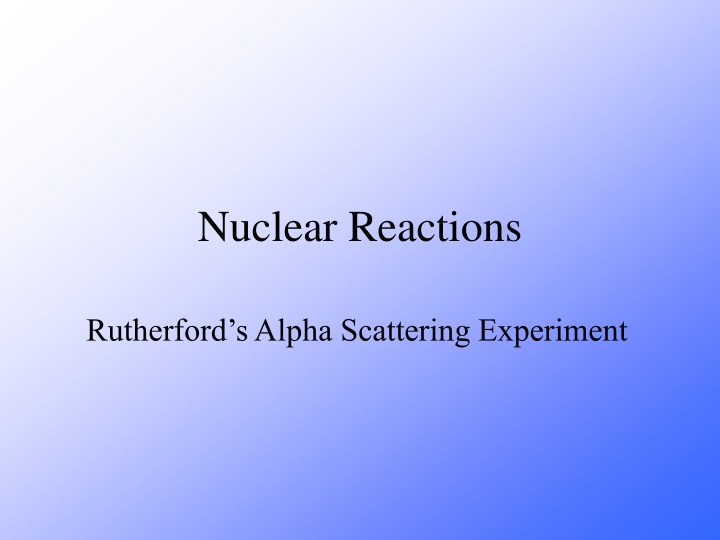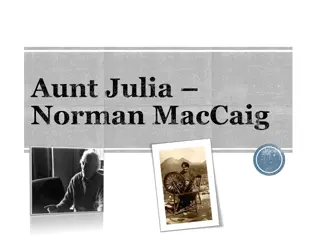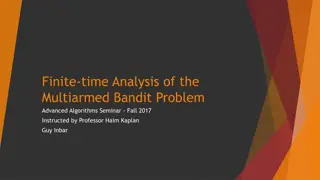Efficient Facility Location for Minimizing Evacuation Regret
Explore a method to determine the optimal location for an evacuation center in a network of cities connected by a highway. By minimizing evacuation time in various uncertain scenarios, this approach aims to reduce regret and optimize emergency response efforts. The strategy involves considering population uncertainty, defining regret, and identifying the objective of minimizing maximum regret. Leveraging a crucial observation, this approach offers improved time and space complexity over previous methods.
Download Presentation

Please find below an Image/Link to download the presentation.
The content on the website is provided AS IS for your information and personal use only. It may not be sold, licensed, or shared on other websites without obtaining consent from the author.If you encounter any issues during the download, it is possible that the publisher has removed the file from their server.
You are allowed to download the files provided on this website for personal or commercial use, subject to the condition that they are used lawfully. All files are the property of their respective owners.
The content on the website is provided AS IS for your information and personal use only. It may not be sold, licensed, or shared on other websites without obtaining consent from the author.
E N D
Presentation Transcript
Nuclear Reactions Rutherford s Alpha Scattering Experiment
CS 4.1 Describe how Rutherford showed that: (a) The nucleus had a relatively small diameter compared with that of the atom. (b) Most of the mass of the atom is concentrated in the nucleus.
IN THE BEGINNING In the early days of atomic theory, many physicists tried to explain the model of an atom. In 1902, Ernest Rutherford showed that alpha particles emitted from the decay of unstable radioactive materials were electrically charged helium nuclei travelling at high speed. In 1909, Rutherford used alpha particles to investigate the composition of gold foil (i.e. to explain the model of an atom).
Aim To investigate the composition of gold foil using alpha particles (i.e. to explain the model of an atom).
Apparatus Rutherford s alpha scattering apparatus: vacuum -source zinc sulphide detector gold foil
Procedure Rutherford fired alpha particles through a piece of gold foil and used a zinc sulphide detector to detect the scattered alpha particles and their location.
Results Rutherford s experiment found that: Most of the alpha particles passed through the gold foil undeviated. A few alpha particles were deflected from their path but continued through the gold foil. A small number of alpha particles rebounded.
Conclusion From the results of his experiment, Rutherford explained: As most alpha particles passed through the gold foil atoms undeviated, Rutherford concluded that most of the atom was actually empty space. The deviation of some alpha particles from their original path were due to positive charges within the foil.
Conclusion From the results of his experiment, Rutherford explained: A small number of alpha particles had rebounded because they collided with something much larger and heavier and which contains a concentrated region of positive charge.
Conclusion As a result of his observations, Rutherford suggested that the atom had a positively charged centre which contained most of the mass. He called the heavy positively charged the nucleus. centre He went on to suggest that the nucleus was surrounded by orbiting electrons required for electrical neutrality.
Conclusion As a result of his observations, Rutherford suggested that the atom had a positively charged centre which contained most of the mass. He called the heavy positively charged the nucleus. centre He went on to suggest that the nucleus was surrounded by orbiting electrons required for electrical neutrality.
Conclusion As a result of his observations, Rutherford suggested that the atom had a positively charged centre which contained most of the mass. He called the heavy positively charged the nucleus. centre He went on to suggest that the nucleus was surrounded by orbiting electrons required for electrical neutrality.
Conclusion As a result of his observations, Rutherford suggested that the atom had a positively charged centre which contained most of the mass. He called the heavy positively charged the nucleus. centre He went on to suggest that the nucleus was surrounded by orbiting electrons required for electrical neutrality.
Conclusion As a result of his observations, Rutherford suggested that the atom had a positively charged centre which contained most of the mass. He called the heavy positively charged the nucleus. centre He went on to suggest that the nucleus was surrounded by orbiting electrons required for electrical neutrality.
Modern measurements show that the average nucleus has a radius in the order of 10-15 m. This is 100, 000 times smaller than the radius of a typical atom.























